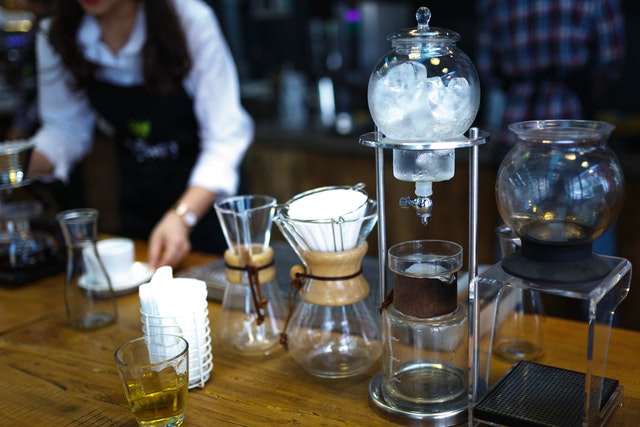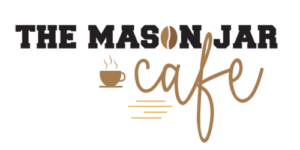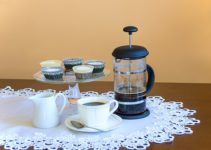
Chemex vs French Press: Which One Should You Get?
If you’re a coffee lover, you know that there are many ways to make your favorite drink. Some people prefer the Chemex method while others swear by the French Press. So, which one is right for you? Here’s a look at the pros and cons of each method to help you decide.
We’re going to compare and contrast two different ways of brewing coffee: the Chemex vs French Press. We’ll start with a brief history of each, then we’ll talk about their pros and cons, and finally we’ll give you some recommendations for which one might be best for your needs.
Table of Contents
Chemex
Chemex is a type of coffee maker that uses a special filter to produce a clean and smooth cup of coffee. The filters are thicker than traditional paper filters, so they don’t let oils and sediment through, which can make your coffee taste bitter. The Chemex also has a flared top that helps the coffee bloom, or release its flavors. If you’re looking for a great cup of coffee without all the bitterness, a Chemex is the perfect way to go.
There are a few different ways to use a Chemex, but the most common is to fill it with cold water and add coarsely ground coffee. You then place the filter in the top, put the coffee in, and slowly pour hot water over it. After that, just remove the filter and your coffee is ready to drink.
Chemex takes brewing back to basics, harnessing the full flavor of freshly ground gourmet coffee beans. It’s simple design makes it elegant but durable. And Chemex couldn’t be easier to use – for a perfect cup of coffee every time simply combine coarsely ground fresh-roasted coffee with hot water in the Chemex Coffeemaker. Then slowly pour some hot water over the grinds until all are wetted. After allowing the coffee grounds to steep for about five minutes, slowly pour all of the remaining hot water into the center of your coffeemaker. Remove any trace of grinds by gently tapping out any clinging water, then allow your purest Chemex cup of coffee to cool.
If you’re looking for a great cup of coffee that doesn’t have any bitterness, a Chemex is the perfect way to go. They’re easy to use and produce a smooth, clean cup of coffee every time. So if you’re in the market for a new coffee maker, be sure to check out the Chemex. You won’t be disappointed.
The Pros And Cons Of Chemex
The Pros Of Chemex
The coffee world is quite divided on the subject of filter brewers. Some swear by the French press, while others lust over their espresso machines and drip cones. However, we’d like to introduce you to what we think comes closest to perfection: the Chemex brewer and filters. Here’s why this simple device offers a superior cup of coffee:
It Saves You Money
Do you want to drink better than average cup of coffee? Are you willing to spend $2-$3/cup for excellent hand-picked beans from roasters who go out of their way to get them at peak freshness? If so, then stop reading now. The truth is that most people cannot tell the difference between a $2 cup of coffee and a $10 cup of coffee.
However, if you’re not one of those people and you want to get the best flavor possible, then the Chemex is your best bet. Not only does it make an excellent cup of coffee, but it’s also affordable. You can buy a Chemex and filters for around $30, which is much cheaper than most other high-quality brewers on the market.
It’s Easy to Use
The Chemex is incredibly easy to use. Simply place a filter in the brewer, add your desired amount of coffee (we recommend using between 18-22 grams), and pour hot water over the grounds. Allow the coffee to steep for 3-4 minutes, then remove the filter and enjoy your delicious cup of coffee.
It Gives You Control
One of the best things about the Chemex is that it gives you control over the brewing process. This allows you to customize your cup of coffee to your own taste preferences. For example, if you like your coffee strong, you can increase the amount of coffee grounds used. Or, if you prefer a milder cup of coffee, you can decrease the amount of grounds used.
It’s Versatile
The Chemex isn’t just for making coffee. It can also be used to make tea, iced tea, and even cocktails. In fact, we think it makes the perfect vessel for iced tea because it doesn’t dilute the drink like a glass does.
It’s Beautiful
Chemex vs French Press – Last but not least, the Chemex is beautiful to look at. It has a simple, minimalist design that will add a touch of elegance to any kitchen. Plus, it comes in a variety of colors, so you can choose the one that best suits your style.
The Cons Of Chemex
The Chemex is a great way to make coffee, but it does have some drawbacks.
– One is that it’s difficult to make multiple cups at once.
– Another is that the glass can break if it’s not handled carefully.
– Finally, the Chemex filters are expensive and can be difficult to find.
French Press
French press coffee is really nothing more than a sturdy beaker filled with coarsely ground coffee and water; however, the preparation method (basically plunging the grounds to the bottom of the carafe) sets it apart from other coffee making traditions like drip or pour over. It’s simple yet effective. This brewing process allows for maximum flavor extraction without filtering out all of the oils that give coffee its delicious taste. The result is an intensely flavored cup of joe that’s clean tasting but not watered down.
French press also makes it super easy to brew single servings at a time, which means you can brew at home and take your drink on-the-go! This makes it a great option for those who want to enjoy coffee at work or on the trail.
Brewing Process
You can find French press brewing equipment online or at any department store, but you don’t need anything fancy to make your own delicious cup of joe. All you need is coarsely ground coffee, hot water and a carafe to brew in. Check out our French press starter kit from William Bounds if you’re looking for a high-quality brewer that’s affordable too! To prepare the brew, simply add ground coffee to the bottom of the carafe and slowly pour hot water over it until it just covers all of the grounds – typically four tablespoons per eight ounces. Give it a quick stir with a wooden spoon or chopstick to make sure all of the grounds are saturated, then let it sit for four minutes.
Now put on your BPA-free rubber gloves (we prefer these ones by Analon ) and push the plunger down slowly in order to trap the ground coffee at the bottom of the beaker. Pour yourself a cup and enjoy!
We know there’s no replacement for freshly brewed French press coffee, but you can always use pre-ground beans if you’re in a pinch. Just wait until your brew cycle is finished before adding more water to dilute any remaining sediment that may have settled at the bottom of the carafe during extraction.
The Pros And Cons Of French Press
The Pros Of French Press
The French Press is an old standby that is still incredibly popular today. It has stood the test of time and proved its worth to be one of the best ways to brew coffee.
– Great Flavor
Allowing your coffee beans to soak in hot water for longer than other brewers maximizes flavor extraction. Even though some think it’s the grounding process, the truth remains; more flavor comes out when brewed with a French press compared to regular drip brewer pens or even espresso machines which run water through pre-grounded coffee.
– Simplicity
There are no filters or electricity needed which makes this method very cost efficient and environmentally friendly as well.
– It’s a Slow Brew
This is a pro for those who love a strong cup of coffee. The French Press takes its time to extract all of the flavor from the beans which results in a rich, full-bodied cup of Joe.
– Temperature Control
The French Press also gives you more control over the temperature of your water than other brewers, allowing for precise extraction and a perfect cup every time.
– Limited Brewing Options
One downside to the French Press is that there are limited brewing options. You can’t make espressos or lattes with one like you can with an espresso machine. But if all you’re looking for is a great cup of regular coffee, then this really isn’t much of a problem.
– Easy Clean Up
There’s no need for paper filters which makes clean up much simpler. Simply wash the plunger and glass portion in hot soapy water after every use and you’re set!
The Cons Of A French Press
– You Must Use Coarsely Ground Coffee
Like any other method of coffee brewing, if you try to use finely ground beans in a French press it can result in an over-extracted cup that is overly bitter or cloudy in appearance. The best way to avoid this is simply to buy whole bean coffee that you have ground just before brewing your coffee with it.
– It Doesn’t Stay Hot Long
This isn’t much of a problem if you’re brewing for one, but if you have a large family or a lot of friends over to share a pot with then it can be a bit annoying. The best way to solve this is by brewing another batch right after the first one.
– There Are Some Dangers To Be Aware Of
If you leave your coffee sitting in the press for too long then there’s a risk that it will become bitter as the oils from the ground beans start to mix with your brew. Also, because you’re boiling hot water and glass together it’s important to always wet the glass before adding any hot liquid.
Comparison Chemex vs French Press
When you are looking for a great cup of coffee, there are many different methods that you can use. Two popular methods are the Chemex and the French press. Both of these methods have their own unique benefits, so it can be tough to decide which one is right for you. Here is a comparison of the two methods to help you make your decision.
The Chemex is a glass coffee maker that uses a cone-shaped filter to brew coffee. The unique filter catches all of the sediment, so you get a clean cup of coffee with no bitterness. The Chemex also has a thick glass carafe that keeps your coffee hot for hours.
Chemex vs French Press – The French press is a metal coffee maker that uses a mesh filter to brew coffee. You simply add coarsely ground coffee to the French press, pour in hot water, cover it, and let it steep for four minutes. Then you use its plunger to push the coffee grounds down to the bottom of the pot so that you can enjoy your cup of coffee.
Versatility
The Chemex is all about producing a clean cup of coffee with no bitterness or sediment. This makes it great for people who prefer their coffee without added flavors or creamers. The French press also keeps your coffee free from bitter sediments, but also allows you to add flavorings like sugar or milk if that’s what you prefer. So when it comes to versatility, this category is really up in the air because both machines are good at different things.
Ease of Use
Chemex vs French Press – The Chemex is definitely a little more difficult to use than the French press. You have to be careful to measure the coffee correctly and make sure that you pour the water in slowly so that it doesn’t over flow. The French press is a much simpler machine to use – you just add coffee, hot water, cover it, and wait four minutes. So if you’re looking for a machine that is easy to use, the French press would be a better choice.
Cleaning
Since the Chemex has a cone-shaped filter, it can be difficult to clean. All of the coffee grounds tend to get stuck in the tiny crevices, and it can be tough to get them all out. The French press is a lot easier to clean because the filter is a mesh screen. All you have to do is give it a quick rinse and you’re done.
Chemex vs French Press – So which machine is right for you? If you’re looking for a clean cup of coffee with no bitterness, the Chemex would be a good choice. But if you’re looking for a machine that is easy to use and doesn’t require a lot of cleaning, the French press would be better suited for your needs. Whichever machine you choose, you’re sure to enjoy a delicious cup of coffee!
FAQs About Chemex vs French Press
How does the Chemex work?
Chemex coffee makers are known to be among some of the best coffee making devices in the market today. They are also widely known for being one of the simplest ways of preparing great tasting coffee, which is why they have garnered quite a following over time. One question that people commonly ask about this brewing method is how it works.
The Chemex coffee maker was invented by Peter J. Schlumbohm, who lived in New York City during his lifetime (1902-1969). This man was an inventor and chemist who earned over 120 patents for different household appliances, tools, and even machines during his lifetime (he patented more than eighty items when he was single!). The creator claimed that he got the inspiration for the Chemex when he saw his wife using muslin to squeeze hot chocolate out of an old brass coffee maker.
The answer is actually quite simple: the coffee is brewed with hot water, which percolates up through a filter. The end result? Coffee!
To make it work, you would pour some hot water over ground coffee beans in the middle chamber – usually about 50 milliliters for starters with 100 grams or 3.5 ounces of fine-to medium-ground coffee with 5 cups or 600 mL total capacity . Next, you allow it to steep for about 4 minutes before slowly decanting (pouring off) the liquid all throughout the top compartment.
Chemex owners recommend that you wet your paper filter first, which will help it to stick to the glass better and make sure that all of the grounds are saturated. You should also make sure that you don’t grind your beans too fine, as this can cause them to clog up the filter.
Chemex vs French Press – The Chemex is a great brewing method for those who want to enjoy a balanced cup of coffee with subtle notes and flavors. The device allows for a gradual extraction process, which means that you won’t get any of the bitterness or acidity that you might find in coffee made with other methods. Plus, it’s simple and easy to use so you can get great-tasting coffee without having to worry about complicated steps or techniques!
How does French Press Work?
Brewing coffee with a French press is easy – all you need is some hot water, coffee beans, and a stove or hot plate. The coffee will be rich, smooth, and aromatic, and taste delicious if you follow these steps!
– Boil water in your kettle on the stove or on an electric burner.
– Pour some water into your French press to preheat it.
– Measure out the coffee beans you’ll be using. Grind them if you haven’t already – this is an important step, because the grind will determine how strong your coffee turns out. For a French press, like to use a coarse grind.
– Add the ground coffee to your French press. Pour just-boiled water over the grounds, filling the press to just below the top. Stir briefly with a spoon to make sure all of the grounds are wet.
– Place the lid on your French press and wait four minutes.
– Carefully plunge the French press’s piston all the way down. This will force brewed coffee through metal filter and down into carafe, while trapping any coarse grains of coffee in the filter above it (called a “French Press”).
– Serve and enjoy!
How Long Should A Chemex Pour Over Be?
While there are plenty of variables that can change this, such as desired strength or grind size, I set out to see if there was any correlation with time and resulting brew. The basic conclusion? There’s not much of one.
What you’re looking at is data from nine separate test pours for each experiment, all performed by me. Each graph represents 1 minute increments for time brewed. On all experiments except the last two (using medium-coarse grinds) were performed using a #4 Melitta filter, 23 grams of coffee ground to a medium-fine grind (<1mm), about 300 mL of heated to 205 degrees water, and bloomed for 30 seconds. The final two graphs (using medium-coarse grinds) were performed using a #4 filter, 23 grams of coffee ground to a medium-coarse grind (1-3mm), about 300 mL of heated to 205 degrees water, and bloomed for 30 seconds.
The first thing that I noticed was that there was no real trend with brew time and resulting cup clarity. This could be due to plenty of factors, such as blooming time, agitation, and even the ambient temperature on the day of testing. Interestingly enough, while there wasn’t much of a trend with cup clarity, there did seem to be one with taste. The cups brewed for longer generally tasted better than those brewed for shorter times, with the best cup coming from a brew that was 7 minutes long.
So, if you’re looking to make a great cup of coffee using a Chemex, it might be best to let it steep for around 7 minutes. Of course, this is just a general guideline and can be tweaked to your liking.
How Much Caffeine Is In A Chemex?
Brewing with a Chemex is a popular way to make coffee. This method uses a cone-shaped filter and produces a clean cup of coffee with a moderate level of caffeine. How much caffeine is in a Chemex? Let’s take a look.
Brewing with a Chemex produces about 47 milligrams of caffeine per six-ounce cup. This is less than what you would get from brewing with an automatic drip machine, but more than what you would get from using a French press. If you are looking for a low-caffeine option, the Chemex may not be right for you. However, if you want a delicious cup of coffee that has a moderate amount of caffeine, the Chemex is a great choice.
Chemex vs French Press – Brewing with a Chemex is a great way to enjoy a delicious cup of coffee while getting a moderate amount of caffeine. If you are looking for a low-caffeine option, the Chemex may not be right for you. However, if you want a delicious cup of coffee that has a moderate amount of caffeine, the Chemex is a great choice.
How Many Times Can You Use A French Press?
This is a question that doesn’t have a definitive answer, as it depends on a number of factors, such as how often the coffee is brewed and how big the French Press is. In general, however, most people find that they can get about 4-5 uses out of a French Press before the coffee starts to taste bitter. This means that if you’re using a French Press every day, you’ll need to brew a new batch of coffee every 4-5 days. If you’re only using it once or twice a week, however, then you can probably go up to 7-8 days without having to brew fresh coffee
So, if you’re looking at the 4-5 days usage estimate, then you can get about 150 uses out of a French Press before it needs to be replaced.
Can I Use My French Press More Than Once?
Yes, you can definitely use your French Press more than once – in fact many people do just that and they actually prefer the taste of coffee brewed in a French Press over and over again. If that sounds like what you’re looking for then we recommend filling up your press with water and giving it a good swirl when you’re finished steeping your coffee grounds. This will help remove most of the remaining grinds so that when you add fresh water to brew another batch the next time, the flavor won’t be too impacted. The best part is that since you’re using such a small amount of coffee grounds each time, the real cost of enjoying multiple cups of French Press coffee throughout the day is pretty low.
How Many Ounces Does My New French Press Hold?
The size and number of servings for your French press will vary depending on how much water you use and how coarsely ground your coffee beans are. Most single cup presses can make up to 12 oz or three normal-sized mugs worth of coffee. The average four-cup press will yield between 32 and 40 ounces, which is enough for eight full cups. Some larger ten-cup presses as well as some jumbo five-cup models exist if you want more than that!
How Do I Keep My Coffee Hot In My French Press?
Chemex vs French Press – It’s unlikely that you’ll be able to keep your coffee hot in a French press for more than two hours as the glass will insulate most of the heat from escaping. If you want to keep your coffee warm for an extended period, we recommend moving it into a thermos instead.
Can I Use Fine Grind In French Press?
No, this is not recommended. Fine grinds can clog the filter of your French press and make it difficult to use in the future. It’s best to use a coarser grind for best results. There are many coffee grinders on the market that will allow you to customize the grind size, so be sure to purchase one that will give you the desired outcome.
What Kind Of Coffee Is Used In A French Press?
Some people say that you should use coarse ground coffee in a French press. This is because the coarser grind will help the water flow through the coffee more easily. It will also help to prevent the coffee from becoming too thick and muddy.
However, others say that you can use any type of ground coffee in a French press. They believe that it doesn’t really matter what kind of grind you use, as long as you like the taste of it.
So which is correct? Should you use coarse ground coffee or any type of ground coffee in a French press?
The answer is…it depends.
It really depends on your own preferences. If you like a coarser grind, then you should use coarse ground coffee. But if you prefer a finer grind, then any type of ground coffee will work.
So experiment with different types of coffee until you find the one that you like best. And then use that coffee in your French press for the perfect cup of coffee!
>>> See more: The Chemex – Everything To Know | Chemex vs French Press
Conclusion
If you’re looking for a simple coffee brewing process that will allow you to customize your cup of joe, then the Chemex is an excellent choice. However, if you are looking for convenience and want something quick without much fuss, then it might be time to go with the French Press. Whichever method suits your needs best should depend on what’s most important in your day-to-day routine. Coffee drinkers have their own personal preference when it comes to which type of brew they enjoy drinking each morning or afternoon pick me up – do yours?
Chemex vs French Press – You now know enough about the benefits of both a Chemex and French Press to make an informed decision on which one is right for you. We’ve shown you how each machine can be used as well as some additional information that will help you choose, but ultimately it comes down to what your personal preference is! Keep in mind that there are no wrong answers when it comes to coffee makers – only different flavors. If we haven’t answered any questions or if something has been unclear, feel free to ask us anything by leaving a comment below.
>>> Tassimo vs Keurig: Which’s Better for Your Countertop?



